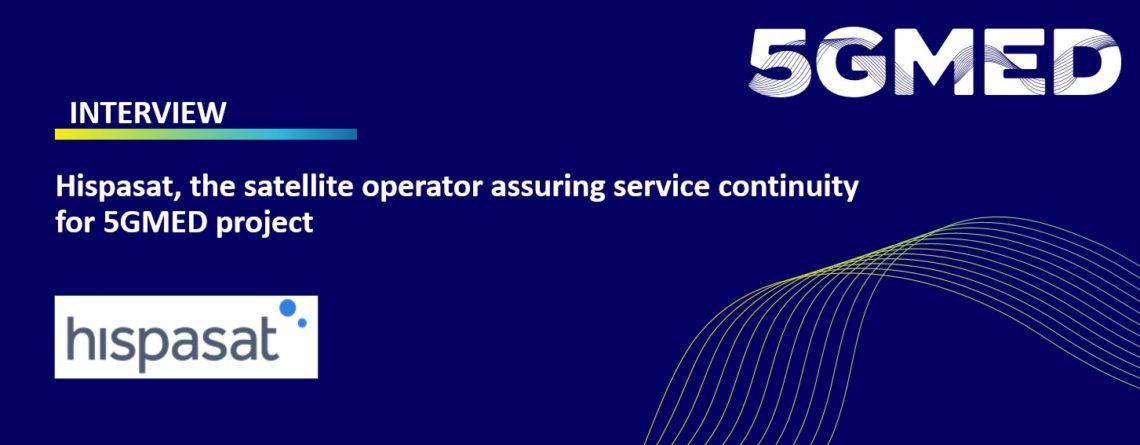Hispasat, the satellite operator assuring service continuity for 5GMED project
This article is part of an interview series on 5GMED partners to promote the various initiatives the project supports. The first interview has been made with Spanish satellite operator Hispasat, which will provide satellite communications for the railway scenarios.
Can you tell us about your company?
HISPASAT is the leading satellite operator in Spain and a driver for innovation in the aerospace sector. The company is the main communication link between Europe and America as a broadband and connectivity service provider in America, Europe and North Africa through its companies in Spain and Latin America, where its Brazilian subsidiary, HISPAMAR, is located. HISPASAT is the leader in broadcasting and distributing multimedia content in Spanish and Portuguese, including broadcasts from major digital Direct to Home (DTH) and High-Definition Television (HDTV) platforms. These activities make it one of the top companies in the world by revenue in its sector and it forms part of the Red Eléctrica Group.
What is the role HISPASAT plays in the 5GMED project?
Hispasat will provide satellite communications for services in the railway scenario. On those areas where there is no other connectivity access, the satellite network will assure service continuity along “Figueras – Perpignan” cross-border section of the Mediterranean corridor. The objective is to have service continuity across a multi-stakeholder 5G infrastructure to offer seamless coverage for all services.
What will be the impact of the project in short term and long term?
In short term, the project will provide the technological validation of 5G for automotive/railways use cases including FRMCS aspects, migration, spectrum, and co-existence issues with the automotive case.
In long term, 5GMED will develop a sustainable model for a European cloud infrastructure supporting CCAM services and FRCMS aspects at European scale and will support sustainable deployment models paving the way towards future deployment actions across pan-European 5G corridors.
How does this project contribute to cross-border collaboration between countries and institutions?
European cross-border cooperation aims to tackle common challenges identified jointly in the border regions and to exploit the untapped growth potential in border areas, while enhancing the cooperation process for the purpose of the overall harmonious development of the EU.
5GMED project will be tested and validated in a cross-border environment, so it will reinforce the cooperation between Spanish and French operators and different infrastructures, optimizing cross-border roaming transitions among MNOs. 5GMED will design and develop a heterogeneous resource coordination framework for an end-to-end service composition and delivery in cross-border scenario.
What can we expect from this new technology?
This new technological ecosystem will bring new business models and economically viable operational collaborations that will integrate the satellite and terrestrial stakeholders in a win-win situation. An example of service exploitation opportunities in 5GMed could be the 5G global coverage (to provide 5G services into underserved areas via hybrid terrestrial-satellite broadband connections) or the implementation of 5G moving platforms that would offer on-board 5G services in mobility scenarios, like trains.
Do not miss our next interview, follow us on our social media.


